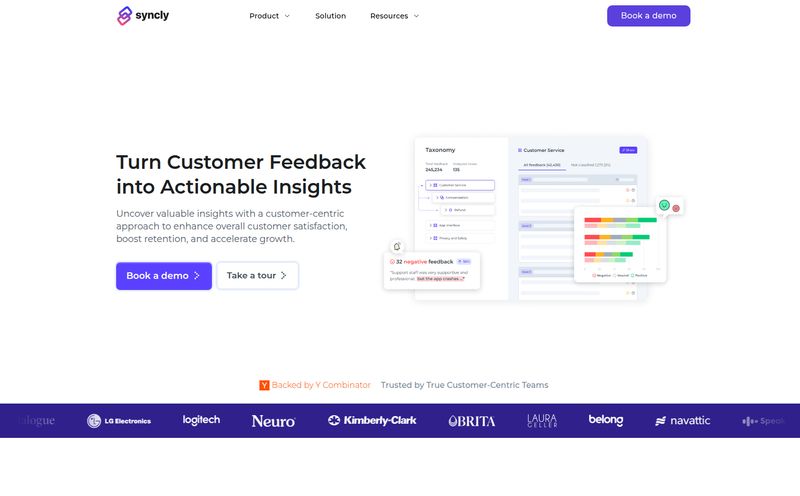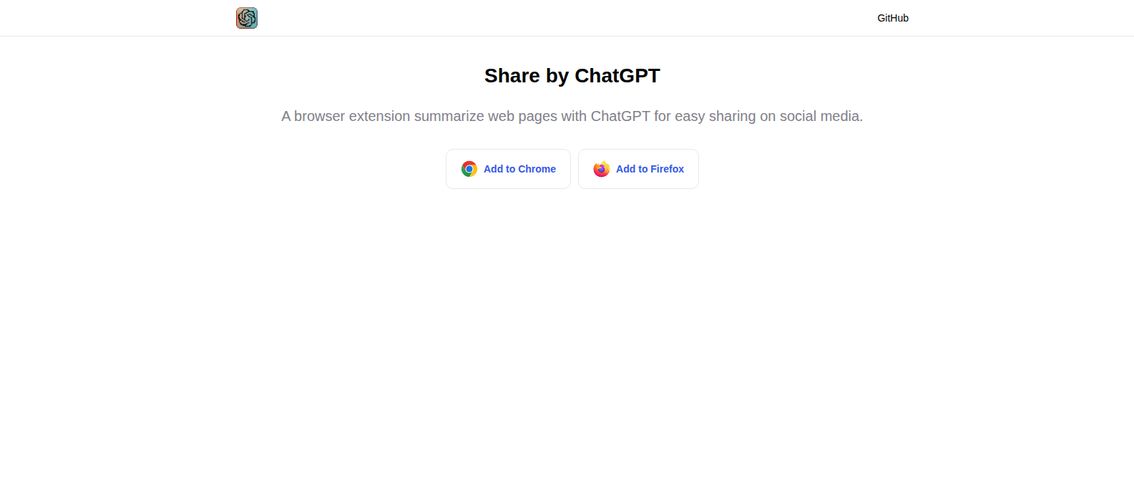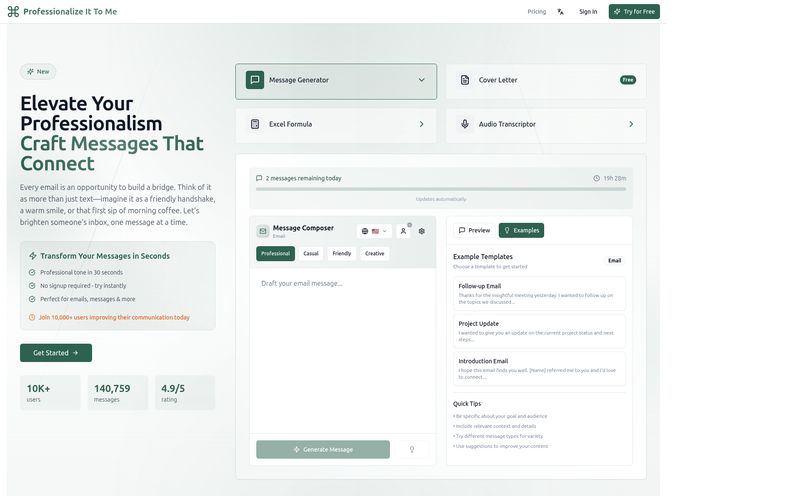Is This the AI That Finally Tames Your Customer Feedback?
If you’re a product manager, marketer, or founder, your life is probably a chaotic symphony of customer feedback. It’s everywhere. Support tickets, App Store reviews, Twitter rants, NPS surveys, that one ridiculously long email from a power user… It’s a goldmine of insight, but it’s buried under a mountain of unstructured, messy, human words. We've all been there, staring at a spreadsheet with 10,000 rows of qualitative data, slowly losing our minds and wondering, “What do they really want?”
So when a tool like Spiral lands on my desk, claiming to use “AI Deep Research” to analyze and structure all that chaos for you, my ears perk up. But let's be real, my skepticism-meter also goes up a notch. We’ve seen a million AI tools promise to change the world. Can this one actually deliver on its promise of taming the feedback beast and spitting out actionable insights?
I decided to take a closer look. And what I found was… interesting. And a little confusing, which we'll get to.
What is Spiral, Really?
At its core, Spiral pitches itself as an AI-powered customer feedback analysis platform. Think of it as a data archaeologist for your customer's voice. It integrates with your existing tools—your CRM, your help desk, public review sites—and pulls in all that unstructured feedback. Instead of you or your team manually tagging and categorizing every single comment, Spiral’s AI does the heavy lifting.
It aims to identify trends, surface the most pressing customer problems, and present it all in a neat little dashboard. The goal? To get you from “a flood of complaints” to “Ah, so the checkout button is the main issue for 21% of users who churned last month” in a fraction of the time. That’s the dream, right?

Visit Spiral
The Two Faces of Spiral
Now, here’s where things get a bit curious. While the main website screams “customer feedback analysis,” I’ve also seen Spiral described as a content repurposing tool. A platform that learns your writing style and can atomize a single piece of content—like a podcast or an article—into a flurry of tweets, LinkedIn posts, and blog summaries. It's a fascinating, and frankly, very different value proposition.
My guess? Spiral might be a platform with two distinct, powerful capabilities, or perhaps they're pivoting or targeting different user segments. For this review, I’m focusing mainly on the customer feedback side, because that’s what their main pages emphasize, but we won't ignore that other, tantalizing content creation feature.
The Core Features I'm Watching
A tool is only as good as what it can actually do. Here's what stood out to me from Spiral's feature set.
Structuring the Unstructured Mess
This is the bread and butter. The ability to pull in data from sources like Zendesk, Intercom, App Store reviews, and surveys and actually make sense of it is huge. We’re talking about turning a firehose of raw text into structured data points. This is the stuff that prevents bad product decisions and helps you build a roadmap based on genuine customer needs, not just the “loudest voice in the room.” It’s less about just finding keywords and more about understanding intent and sentiment.
The Promise of Instant ROI
Spiral’s site talks about “Instant ROI.” Bold claim. But I can see how it's possible. If the AI can quickly surface a critical, revenue-killing bug or a major point of friction in your user experience that you were blind to, fixing that one thing can pay for the tool many times over. The platform seems geared towards flagging these “top customer contact drivers” so you know exactly where the fires are burning brightest.
Enterprise-Grade AI
“Enterprise-Grade” is one of those marketing phrases that can mean everything and nothing. In this context, it seems to point towards the AI’s ability to handle large volumes of data and provide nuanced insights beyond simple word clouds. The trusted-by logos of companies like Roku and Turo suggest it's built to handle scale.
Let's Talk Money: The Spiral Pricing Plans
Okay, this is where that “two faces of Spiral” thing becomes really clear. I’ve found two different pricing structures. Let's break down the one for the customer feedback analysis tool first.
| Plan | Price | Best For | Key Features |
|---|---|---|---|
| Observer | $0/month | Individuals or small teams starting out. | Informative, but limited insights to get a basic read on feedback. |
| Bug Hunter | Contact Us | Small teams needing to track reviews and feedback sources. | Real-time, public review monitoring, up to 10 users, full reports. |
| Issue Vulture™ | Contact Us | Medium or large orgs with high-volume feedback. | The flagship offering with all feedback channels and unlimited users. |
The free “Observer” plan is a fantastic entry point. No risk, all reward. The “Contact Us” for the higher tiers is pretty standard for B2B SaaS, but I admit, I always find it a bit frustrating. It usually means the price depends on your team size and usage.
Then there's the other pricing I found, which seems to be for the content repurposing side: a Free plan with 20 “Spiral runs” and a Pro plan for $15/month with unlimited runs and API access. This is much more in line with a creator or small marketing team tool.
My Takeaway: Make sure you know which Spiral you're signing up for! They seem to be solving two very different, very real problems.
My Honest Take: The Good and The Not-So-Good
No tool is perfect. After digging in, here’s my balanced perspective.
The Advantages of Spiral
The biggest win here is the massive amount of time saved. Seriously, the hours I’ve personally lost in spreadsheets trying to manually tag customer feedback is just painful to think about. Automating that process is a game-changer. It frees up your smart, expensive humans to do what they do best: solve problems, don't just categorize them. It also democratizes insights; you’re not just relying on anecdotes anymore but on quantifiable data. And if you tap into the content features, maintaining a consistent voice and scaling your content output without hiring an army of freelancers is a huge plus.
Potential Downsides
The main one for me is the potential for brand confusion between the two product offerings. It's a bit jarring. Also, any AI is only as good as the data you feed it—the classic GIGO principle (Garbage In, Garbage Out). If your data sources are a mess, Spiral’s effectiveness will be limited. Finally, the need to train it with your high-performing content (for the content repurposing side) means there's an initial setup period. It's not just plug-and-play magic from day one.
Who Is Spiral Actually For?
I see a few key personas getting a ton of value here.
- Product Managers: This is a godsend. Use it to validate your roadmap, prioritize bug fixes, and have actual data to back up your decisions when the CEO asks why you're building feature X instead of feature Y.
- Marketing & CX Teams: For understanding customer sentiment at scale. You can pinpoint what users love (and double down on it in your messaging) and what they hate (and work with the product team to fix it).
- Founders & Startups: The free “Observer” plan is a no-brainer. In the early days, you live and die by customer feedback. This gives you a structured way to listen without the cost.
Final Thoughts on Spiral
So, is Spiral the magic bullet for all your feedback woes? Maybe. It’s a seriously powerful tool for any organization that's serious about listening to its customers. The ability to automate the analysis of qualitative data is, without a doubt, a superpower.
While the dual personality of the platform is a bit odd, both sides of its identity solve a critical business need. Whether you're drowning in customer support tickets or struggling to scale your content marketing, Spiral seems to have a relevant, AI-driven answer. In a world that's getting noisier by the day, a tool that helps you find the signal in the noise isn't just a nice-to-have. It’s a life raft.
Frequently Asked Questions about Spiral
- What is Spiral's main function?
- Spiral's primary function, as presented on its main site, is AI-powered customer feedback analysis. It integrates with CRMs and other sources to structure and analyze unstructured text data, like reviews and support tickets, to provide actionable insights.
- Is Spiral free to use?
- Yes, Spiral offers a free plan. For the feedback analysis tool, there's the "Observer" plan which is free. For its content repurposing features, there's also a free tier with a limited number of uses per month.
- How does Spiral's AI work?
- It uses natural language processing (NLP) and machine learning models to parse text, understand sentiment, identify topics, and spot trends within large volumes of customer feedback without requiring manual tagging.
- Can I use Spiral to create content?
- Yes, it appears so. Based on available information, Spiral has a feature set or a separate product that learns your specific writing style from existing high-performing content and then helps you repurpose it into various formats like tweets, summaries, and proposals.
- What kind of companies use Spiral?
- The website highlights logos from companies like Owlet, Roku, Whitepages, and Turo, suggesting it's used by tech companies of various sizes, from startups to larger enterprises, that need to manage a high volume of user feedback.
- Is the pricing transparent?
- It's mixed. The content-focused tool has clear pricing ($15/mo for Pro). The customer analysis tool offers a free plan, but its more advanced tiers—Bug Hunter and Issue Vulture—require you to "Contact Us" for a price quote, which is common for enterprise software.



